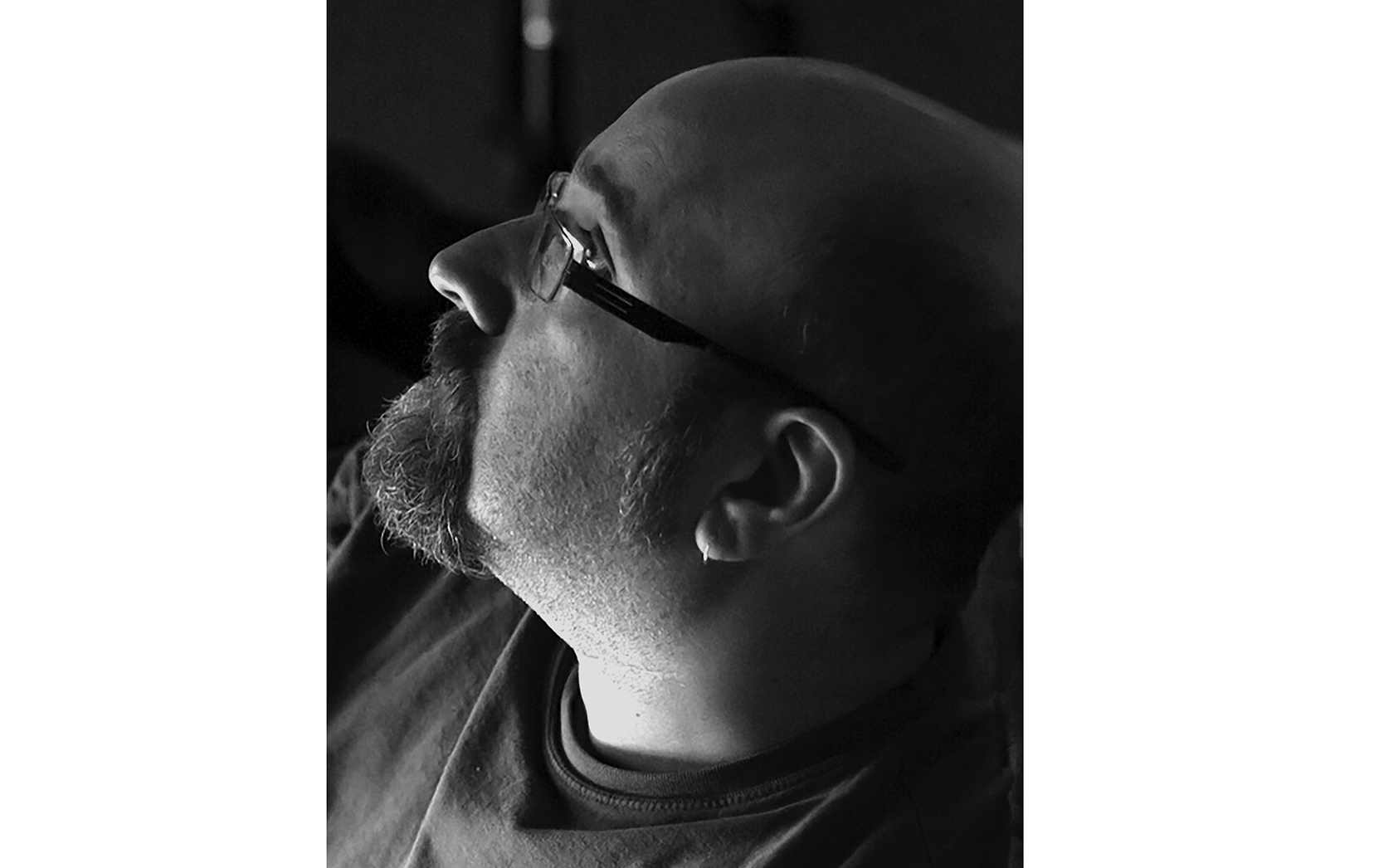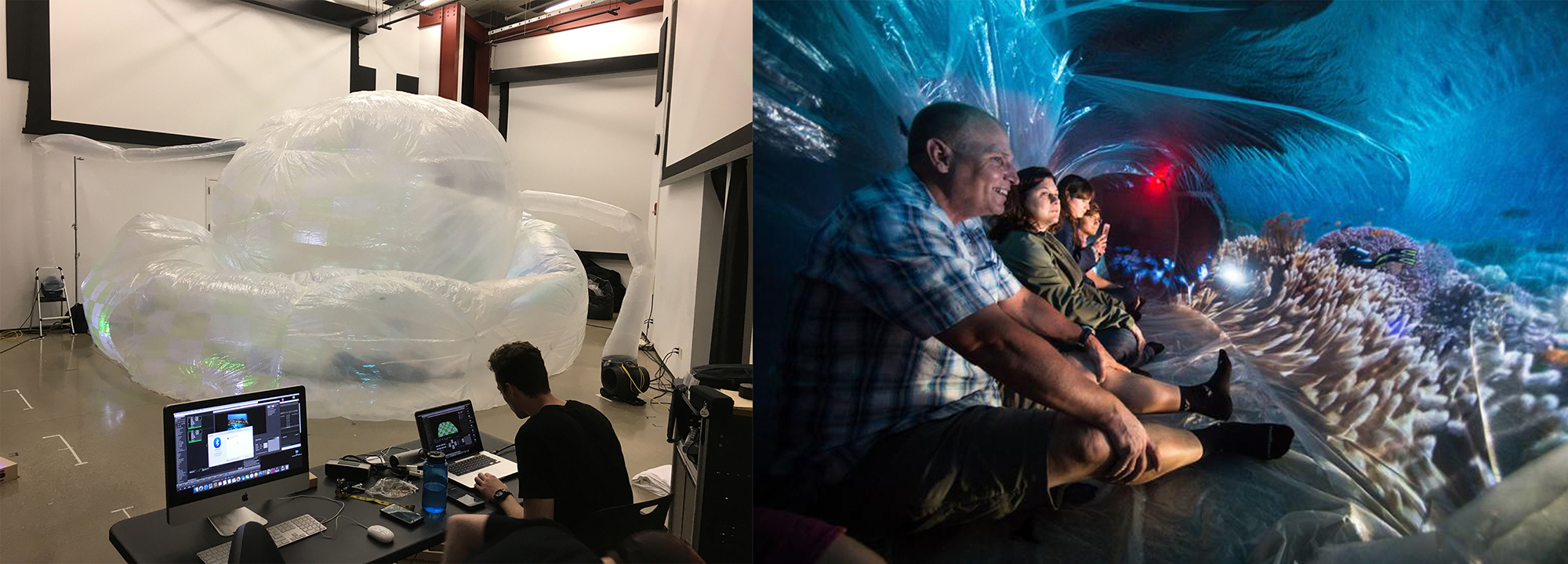Next up in Live Design’s What’s Trending: Education series is assistant professor for digital media in performance at the University of Iowa, Daniel Fine. With roots in projection design, his recent projects include: Kansas No More, a 15-minute dance with five dancers, three projectors, two live cameras, Watchout, Isadora, two computers, and a 42'x23' projection surface with five doors and eight windows; and Live Geometry, a four-hour durational performance with five projectors, four live cameras, live video mixing, a 3D clay printer, Isadora, two computers, and real-time data driven visuals used as “video glaze” on ceramic objects, to name just two.
At LDI2018, Fine will present a solo session on The Art of Content Creation and take part in the third annual Projection Mapping Summit. In his extensive, three-part What’s Trending: Education essay, he addresses the challenges that many schools face in successfully integrating digital media and projection design into their curriculum.
Part Three From Daniel Fine

When creating a curriculum, you may become daunted at the breadth of what students need to learn in order to be successful. Even if you have a specialist on faculty, they may not be able to teach everything required. That’s OK. This is an interdisciplinary field, so don’t be afraid to look for help.
Here is a sample curriculum that Matthew Ragan and I put together for an independent study we were taking during our MFA training at Arizona State University in 2014.
What other departments at your University might offer classes and reserve seats for your students? Here are some classes that may already exist at your University that you can tap into as part of an interdisciplinary curriculum approach:
- Video production 101 (Film, Film Studies, Communication, Journalism, Intermedia)
- Video editing (Film, Film Studies, Communication, Journalism, Intermedia)
- New media history/theory (Communication, Media Studies, Art, etc.)
- Animation (Art)
- Computer Animation (Art, Computer Science)
- Physical Systems (Engineering, Art)
- Basic Coding (Computer Science)
Space is also a tricky problem that needs to be solved. At every university, space is a premium, and there just isn’t enough equipped facilities. However, you must solve this issue. Your students need a dedicated facility. Imagine teaching painting without a painting studio, or lighting without a light lab, or computer programming without a computer lab. Students must be able to put their hands on the technology. They must be able to set-up little performance scenarios, surfaces to projection map onto, space to capture motion data, etc. It takes too much time to set-up and break down and set-up and break down equipment daily. This will impede learning, as the focus will become the set-up and striking of gear. No doubt, students need that practice, but they really need to be working with the technology and the performers, the design and story. You must find a space you can dedicate as a digital media studio or at the very least one that can be shared.
As students learn how to use the technology and create dramaturgically meaningful and design-rich content in their coursework, they will naturally want to integrate it onto the stages at your university. This can become tricky, because it may require additional gear in the performance venues, necessitate more staff, add expenses to the budget, and will certainly demand more tech time in the theatre. You may find that you need to create policies for using projection and new media and that you have to find new methods of supporting student work on your stages and in your rehearsal halls. This is a good problem to have. It means your students are excited to use what they have been learning in the class on the stage. How can you make that happen?

The best way is to have support from all the areas within your academic unit. Get buy-in. It shouldn’t be too hard. There might be some resistance—change is hard—but digital media and projection’s inclusion in live performance affects everyone involved. It can radically alter meaning, how we create, how an audience experiences a story. How can you begin to include digital media into each concentration’s curriculum so that it can grow to be included in your theatres—be they traditional venues or site-specific?
At the University of Iowa, in just my two short years here, we have begun to make changes to our different curriculums. How might your school think about this as well? Here is what we have done:
The curriculum:
- By the end of my fifth year, there will be five courses that form the foundation of an undergraduate track and the beginning of a soon to be MFA in Digital Media in Performance. Five are newly created courses and one already existed. The foundational courses are:
- Producing and Directing Digital Video (Video production 101 - hands on with Adobe Premiere Pro - editing, compositing, basic keyframe animation, keying, syncing audio to video - DSLR video, 360 video, greenscreen, audio recording, lighting, scriptwriting, directing, design, etc.)
- Video for Performance (Integrating video into live performance. Hands on with Adobe After Effects and QLab, projection mapping, cueing, etc.)
- Entertainment Design (Hands on with the grandMA2, Watchout, Pandoras Box, projection mapping.)
- Installations and Interactive Performance (Theories and practical application of creating interactive experiences with technology and design. Hands on with Isadora, Kinect sensors, projectors, projection mapping, etc.)
- Performance, Art, and New Technologies in Society (Survey/maker class on four major technological inventions and how artists have co-opted them. Hands on making projects using the ideas/tools of these technologies: Telepresence, AI, VR/AR, Post-humanism.)
- Performing with New Technologies (Created for MFA actors and dancers, will focus on how to perform with live video cameras, manipulate avatars, act in VR and AR worlds, etc.)
The Dance department at UI:
- All undergraduate majors and graduate choreographers/performers are required to take one course in the Digital Arts.
The Theatre Arts department:
- MFA Design:
- Plans are under way to create an MFA in digital media design for live performance.
- All MFA designers must declare a secondary design area of focus. Digital Media is currently offered as a secondary area.
- MFA Directing:
- All MFA directors must take three digital arts courses. They include:
- Producing and Directing Digital Video
- Video for Performance
- Installations and Interactive Performance
- MFA Acting:
- All MFA actors must take four digital arts courses. They include:
- Producing and Directing Digital Video
- Acting for the Camera
- Performing with New Technologies
- Website/Graphic Design
- Undergraduate Certificate in Public Digital Arts:
- As part of the curriculum committee, I have been working for one and a half years to create this new certificate. Starting in Fall of 2018, undergrads will be able to earn an interdisciplinary certificate, which has five tracks:
- All MFA actors must take four digital arts courses. They include:
- All MFA directors must take three digital arts courses. They include:
This all is a major curricular addition to multiple departments and concentrations. It isn’t easy. It takes time, energy, and money. But hardly anything worthwhile is easy. Implementing curricular change, hiring new faculty, finding and/or allocating funding for equipment and finding facilities in any University will always be a challenge at best. For our schools to stay competitive and offer students the foundations in this growing area of live performance, we must all work together across departments, across Universities, and across disciplines to pull our resources and knowledge. The success of our students in this continuously emerging field demands it. It certainly is an exciting time.